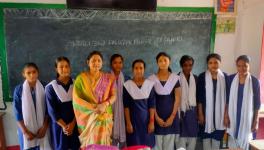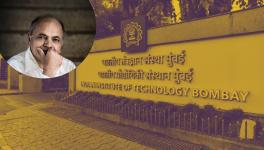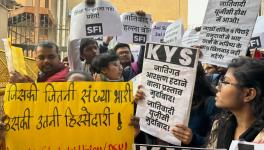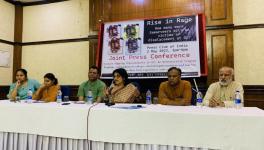The Future of Education is Open
I was talking to the principal of a Mumbai-based school and asked him what role information technology (IT) plays in education.
He said, “The only role technology has played in education is to increase the cost.” It is simply astonishing that the education sector -- one of the most information intensive industries in the world -- operates with virtually no input from the IT industry.
Even sectors like banking and government, considered to be among the most conservative industries in the world have embraced technology. Modern banking (think ATMs and internet banking) is practically impossible without the use of IT, while the Indian government has embarked upon several mission mode projects that have computerised Income Tax, Passports and many other citizen services. In this scenario, the education sector seems to be the stubborn last bastion that resists the advances of technology.
Globally, this scenario is changing. In the middle of the dot-com boom in 2000, the venerable academic institution, MIT, took the unprecedented decision of giving its course materials, including videos of its legendary teachers, away for free as Open Education Resources (OERs). Since inception, the OCW site has been visited 152 million times, extending the reach of the elite MIT's content way beyond what was possible through its classroom lectures. MIT's decision has benefited many thousands of teachers and students, and is helping created a more educated and better world.
India's own National Program on Technology Enabled Learning (NPTEL) has brought together India's premier IITs together in a well organised effort to disseminate IIT's content. Today, the NPTEL channel on the online video site, YouTube has attracted an impressive 86 million views for the 11,000 videos on its channel.
Another superstar in the world of online education is Salman Khan's (a former hedge-fund employee, NOT the film actor!) Khan Academy. This web site has over 4000 videos on subjects ranging from basic addition to advanced subjects like game theory, that have been viewed 252 million times. This means that, on average, each video has been viewed 60,000 times. In education terms having one lesson viewed 60,000 times is the equivalent of the actor Salman Khan's recent string of Rs 100 crore hit films. Which other medium can enable a class session to reach out to thousands of students?
I spoke to one student who uses Khan Academy to revise his maths lessons and he said that he found, Khan Academy “cool.” That in itself was revolutionary to me, coming as I did from a school where the majority of my classmates struggled with maths. Other students that I spoke to showed off the badges they had accumulated after watching the Khan Academy videos and achieving proficiency in various skills. For students, the ability to learn at their own pace and rewind the videos and watch them again and again without embarrassment is a valuable feature of these videos.
Educationalists and teachers are using resources like Khan Academy for “flipping the classroom.” Instead of the traditional model where the teacher teaches in the classroom and assigns homework, in the flipped classroom, the teacher assigns videos for students to study at home and clarifies their doubts in the classroom. Those of us who have experienced that moment of brain freeze when we tune out of a classroom simply because we cannot keep pace with the teacher will appreciate the benefits of the flipped classroom, and the freedom to study at one's own pace.
While I have not come across a “flipped classroom” in India, I have met with several teachers who have begun experimenting with videos in their classes and the results are very encouraging. In the Anand Nagar Municipal School in Dahisar, a distant suburb of Mumbai, two Teach for India (TFI) fellows are teaching a class full of boisterous third standard students. The kids seem to be on their own trip as the teacher teaches, but when the teacher puts on a animated musical video teaching past tense, the kids fall silent and then start to sing along with the video. The TFI fellows have been experimenting with videos in the classroom since January 2013 and report that overall class performance has gone up and that students are now retaining concepts better. In the case of some slow learners, the improvement was as much as 60 percent. It is now recognized that there are three kinds of learning styles – visual, auditory and kinesthetic. While traditional classrooms were primarily oriented towards auditory learners, the use of videos in the classroom comes as a boon to visual learners.
Over the last one year, several teachers I spoke to said that one of the greatest challenges they face is retaining the attention of the children in the classroom. They also said that in the case of some concepts like the rotation of the earth, photosynthesis, phonics and early stage mathematics, videos work exceedingly well in helping students understand basic concepts.
With the cost of access devices plumetting, and the imminent arrival of 4G and optical fiber bandwidth expected at speeds of around 50MBPs, it will soon become feasible for schools to adopt technology more widely in their classrooms. The availability of good quality educational content will also encourage parents to invest in tablets, laptops and access device for their children's education. The ecosystem of entrepreneurs who are building apps and videos for education is growing rapidly. It is to the credit of the Ministry of Human Resources Development (MHRD) that its National Policy on ICT in Schools recognizes the need to digitize educational content and create OERs. MHRD must replicate the success of NPTEL and create content for primary and secondary education. It must identify India's best teachers and incentivise them to create OERs. This will give teachers the recognition and following they deserve.
The use of IT, OERs, educational apps and games represent an opportunity to fundamentally change the education system that has remained fairly static for centuries. We must grab this opportunity with both hands.
About the author: Venkatesh Hariharan is Director of Knowledge Commons, and NGO working in the area of open standards, Free and Open Source Software and Open Education Resources. Views expressed here are his own.
Disclaimer: The views expressed here are the author's personal views, and do not necessarily represent the views of Newsclick
Get the latest reports & analysis with people's perspective on Protests, movements & deep analytical videos, discussions of the current affairs in your Telegram app. Subscribe to NewsClick's Telegram channel & get Real-Time updates on stories, as they get published on our website.
























